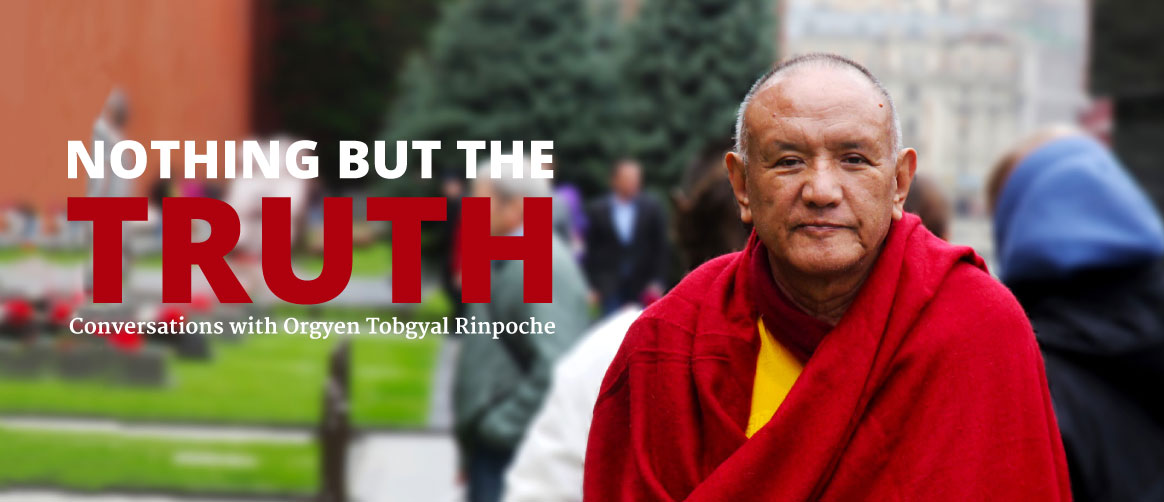Lerab Ling, 6 November 2012
First thing in the morning on the day we were to celebrate Buddha’s descent from Tushita heaven where he had been teaching his mother – Lha bab duchen in the Tibetan tradition – Rinpoche decided it was time he played his part in promoting women’s rights. The fact that it was election day in the US might also have had something to do with it. The sadhana called the Three Roots needs to be practised every day in this drupchen, because Padma Khandro from the Seven Cycles is only a branch practice of this sadhana, in other words Padma Khandro is only one deity of this Three Root mandala, and this mantra is part of the Three Root sadhana. So, for whatever reason, during the 6am session of the Seven Profound Cycles of Padma Khandro, Rinpoche offered this very short teaching about the Vajrayogini mantra.
{simplepopup}
Only read if you have received the Three Roots of Profound Longevity empowerment or a Vajrayogini empowerment.
{/simplepopup}
There are many women here today. Actually, I’m told that in the world today there are more women than men and that women have more power than men. Even His Holiness the Dalai Lama goes beyond promoting mere equality between men and women by saying that women are more important. So I too will give more importance to women.
Vajravarahi is the most important of all female deities. There are three planes of dakinis that fill the ‘space above’, ‘the ground in the middle’, and ‘below ground’. This world has sixty-four places of power: the twenty-four sacred places, the thirty-two sacred lands and the eight charnel grounds. Each one of these sixty-four places is presided over by a principal dakini, surrounded by hundreds of thousands of dakas and dakinis. The most important, or chief, or principal of all these dakinis is Vajravarahi.
On the absolute level, skilful means manifest in the form of male deities, such as Hayagriva, and wisdom manifests in female forms such as Vajravarahi.
The Sadhana of the Three Roots involves three mandalas – the mandala of the body, the mandala of the speech and the mandala of the mind. These three mandalas need explaining, but any yogis or yoginis among us today who practice Vajravarahi will know about them. When a number of different mandalas must be accomplished individually within a sadhana, there is a specific mantra for each of them. In this sadhana[1]From The Sadhana of the Three Roots, from the Seven Profound Teaching Cycle, edition for the Drupchen November 2012, Page 19., the syllable om is repeated three times at the beginning of the mantra, and the syllables hung and phat are recited three times at the end. So, when you practise each mandala separately, you should recite each part of the mantra independently.
How do we do this?
- The first mantra is the mantra of the enlightened body of Vajravarahi, which is om sarva buddha dakini hung phat.
- It is followed by the mantra of her enlightened speech, om benza warnaniye hung phat, at the end of which soha is added.
- And finally, the mantra of her enlightened mind, which is om benza bairotsaniyé hung phat.
When they are all practised together, we recite the mantra as it appears in this practice:
om om om sarva buddha dakiniyé benza warnaniye benza bairotsaniyé hung hung hung phat phat phat soha
This mantra is the heart essence of all the dakinis residing within the mandalas of body, speech and mind. According to the Vajrayarahi Tantra, once you understand this, if you recite this mantra thirty-six times every day, as soon as you die you will be taken to Khechari’s heaven. This is why it would be good for all women – as women tend to like the female deities – to recite this mantra.
Translated by Gyurmé Avertin
Edited by Janine Schulz
